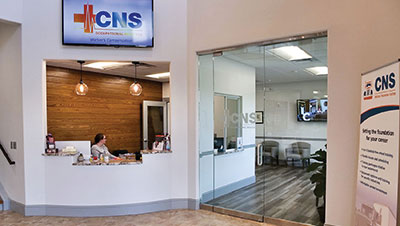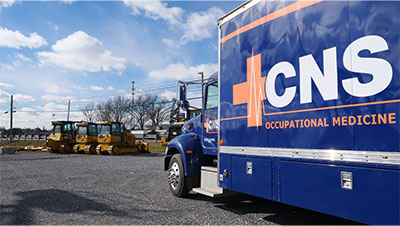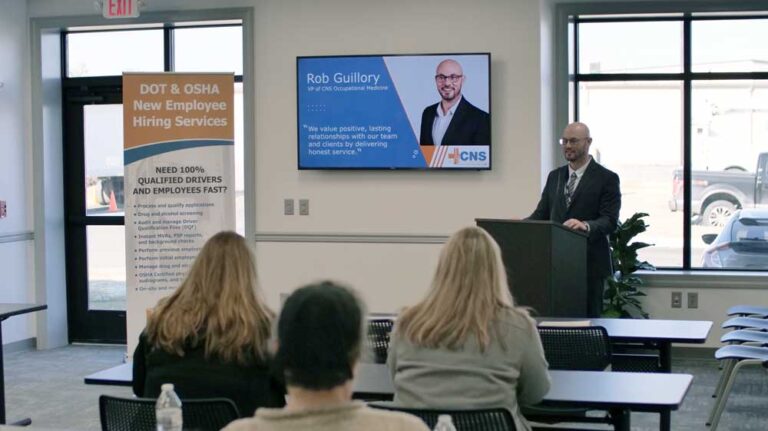Did you know that at the beginning of the Biden administration, the White House directed the Occupational Safety Health Administration (OSHA) to double the number of compliance safety and health officers and step-up safety audits nationwide?
Now that we are in 2023 and those inspectors are fully trained, industries should expect to see them at jobsites during their peak seasons.
With more frequent inspections comes increased violations and fines.
In 2015, Congress passed the Federal Civil Penalties Inflation Adjustment Act Improvements Act to advance the effectiveness of civil monetary penalties and to maintain their deterrent effect.
This means fines are increased each year and, in 2023, OSHA’s maximum penalties for serious and other-than-serious violations will increase from $14,502 per violation to $15,625 per violation.
The maximum penalty for willful or repeated violations will increase from $145,027 per violation to $156,259 per violation.
But OSHA has also bolstered their enforcement power.
OSHA expands “instance-by-instance citations”
In January, DOL announced expansion of OSHA’s authority to issue increased “instance-by-instance citations” (IBI citations) and penalties for cases identified as “high-gravity” serious violations of OSHA standards.
The previous policy, which has been in effect since 1990, applied only to “egregious willful violations.”
Some of the specific conditions include:
- lockout/tagout,
- machine guarding,
- permit-required confined space,
- respiratory protection,
- falls,
- trenching, and
- cases with other-than-serious violations specific to recordkeeping
The new guidance covers enforcement activity in general industry, agriculture, maritime, and construction industries, and became effective in April 2023.
The decision to use IBI citations will be based on consideration of one or more of the following factors:
- the employer has received a willful, repeat, or failure to abate violation within the past five years where that classification is current (i.e., the violation classification did not change upon settlement or other disposition of the citation);
- the employer has failed to report a fatality, inpatient hospitalization, amputation, or loss of an eye as required by 29 C.F.R. § 1904.39 (2022);
- the proposed citations are related to a fatality/catastrophe; or
- the proposed recordkeeping citations are related to an injury or illness that occurred as a result of a serious hazard.
OSHA also reiterated their existing policy that allows Regional Administrators and Area Directors discretion to not group violations in appropriate cases to achieve a deterrent effect.
In particular, the agency may refrain from grouping violations where there is evidence that worksite conditions giving rise to the violations are separate and distinct, or where different conduct gave rise to the violations.
This enforcement discretion is an important tool in OSHA’s arsenal that helps deter employers from flagrantly disregarding their responsibilities to protect workers and comply with OSHA standards and regulations.
Grouping violations should be considered when:
- two or more serious or other-than-serious violations constitute a single hazardous condition that is overall classified by the most serious item,
- grouping two or more other-than-serious violations considered together create a substantial probability of death or serious physical harm, or
- grouping two or more other-than-serious violations results in a high gravity other-than serious violation.
In cases where grouping does not elevate the gravity or classification and resulting penalty, then violations should not be grouped if the evidence allows for separate citations.
Employers should take proactive steps to review workplace safety policies and practices to ensure compliance with OSHA standards and regulations.
So, where will OSHA inspectors look for fines?
Fall protection in Construction (29 CFR 1926.501)
Across every industry, especially construction, fall protection is still the most common OSHA citation with 5,260 citations in 2022.
Most citations come from a lack of fall protection systems for workers exposed to a fall distance of six feet or more to a lower surface engaged in residential construction.
Although much has been done in the way of training such as national emphasis, improved equipment selection, and workplace outreach, far more training and enforcement needs to be done to reduce fall risk.
Hazard Communication Standard, General Industry (29 CFR 1910.1200)
To ensure chemical safety in the workplace, information about the identities and hazards of the chemicals must be available and understandable to workers.
However, too often employers fail to provide hazard communication training on the chemicals in use and on energy control procedures – known as lockout/tagout – to prevent sudden machine starts or parts movement while machines are serviced or maintained.
While training, labeling, and safety data sheets (SDS) violations are common, the most common violations are due to employer failure to develop, implement, and maintain a workplace hazard communication program in the first place.
Major changes to the Hazard Communication Standard:
- Hazard classification: Provides specific criteria for classification of health and physical hazards, as well as classification of mixtures.
- Labels: Chemical manufacturers and importers will be required to provide a label that includes a harmonized signal word, pictogram, and hazard statement for each hazard class and category. Precautionary statements must also be provided.
- Safety Data Sheets: Will now have a specified 16-section format.
- Information and training: Employers are required to train workers on the new label elements and safety data sheets format to facilitate recognition and understanding.
Additionally, OSHA is expected to update the Hazard Communication Standard (HCS) in 2023.
In 2021 the agency issued a notice of proposed rulemaking (NPRM) to modify the HCS to maintain conformity with the United Nations Globally Harmonized System of Classification and Labeling of Chemicals (GHS) (revision 7), align certain provisions with Canada and other U.S. agencies, and address issues that have developed since implementation of the 2012 standard.
When this final rule comes out, employers can expect increased expectations of worker protection and increased penalties.
So, get ready to train your employees on the latest hazard communication standards changes.
Respiratory Protection, General Industry (29 CFR 1910.134)
If a respirator doesn’t fit your face properly, contaminated air can leak into the respirator facepiece, and you could breathe in hazardous substances.
Unfortunately, like HCS, the majority of respiratory protection violations come from a lack of an employer respiratory protection program.
This can affect the construction, maritime, healthcare, mining, and other industries in hopes to prevent lung cancer, silicosis, chronic obstructive pulmonary disease, kidney disease, and other health issues from hazardous substances.
Employer respiratory protection programs must include medical evaluations, written procedures, fit testing, training, and equipment selection.
A respirator fit test determines if a tight-fitting respirator seals appropriately and does not leak. It should only take place after an employee has been medically cleared to wear a respirator and before the employee actually wears it on the job.
Don’t miss the latest in respirator fit testing news, check out our other articles on this topic:
- Hexavalent Chromium: Understanding Health Effects & Why Respiratory Testing is Needed
- Healthcare Respiratory Protection Should Include Respirator Fit Test For N95 Masks
- Should Employees Have Respirator Fit Test For N95 Masks During Avian Flu Outbreak?
- Stricter OSHA Rule In Effect For Silica Exposure and Silica Respiratory Testing
Heat Injury Prevention
One of the first areas OSHA targeted at the beginning of Bidens administration was heat-related injuries.
In late 2021, OSHA published its advance notice of proposed rulemaking (ANPRM) for heat injury and illness prevention in outdoor and indoor work settings in the Federal Register.
Excessive heat exacerbates existing health problems like asthma, kidney failure, and heart disease, and can cause heat stroke and even death if not treated properly and promptly.
Workers across hundreds of industries in both outdoor and indoor work settings without adequate climate-controlled environments are at risk of hazardous heat exposure.
While 80% of heat-related fatalities occurred in outdoor work environments, 61% of non-fatal heat-related illness cases occurred during or after work in an indoor work environment.
In April 2022, the agency launched its first-ever national campaign to emphasize the potential danger and preventability of heat-related illnesses.
Employers must review OSHA’s new National Emphasis Program (NEP) related to heat illnesses and injuries for both outdoor and indoor workers.
As summer comes into full force, employers should follow the steps below to keep newer workers safe in hot environments:
- Schedule new workers to work shorter amounts of time working in the heat, separated by breaks, in heat stress conditions.
- Ensure new workers only work in the heat for 20 percent of the normal duration on their first day in the heat (20 percent first day).
- Increase work duration in the heat by 20 percent on subsequent days until the worker is performing a normal schedule in the heat (20 percent each additional day).
- Understand and allow that some workers may need up to two weeks to acclimatize.
- Workers should do the same task during the acclimatization week that they will do during a full schedule in the heat.
- Give new workers more frequent rest breaks—at least one rest break during the period when they are working in the heat.
- Train new workers about heat stress, symptoms of heat-related illness, and the importance of rest and water.
- Monitor new workers closely for any symptoms of heat-related illness.
- Use a buddy system and don’t allow new workers to work alone.
- If new workers talk about or show any symptoms: (1) allow them to stop working; (2) initiate first aid; and (3) never leave someone alone who is experiencing symptoms.
Have an illness and want to avoid busy Doctor’s offices or medical facilities?
Start your customized health plan to meet your business needs and keep your employees healthy and safe.
Our Occupational Medicine Team will develop a custom plan for your company. You may need a combination of services related to:
- Workers’ Compensation
- Physicals and Biometric Screenings
- Respiratory Fit Testing
- Nurse Triage
- and more
We understand the impact that lost time, limited duty, and medical costs have on the company and the employee. So, work with an occupational medicine provider that can be staffed on-site or have a mobile health clinic come to reduce employee downtime away from the office.
We also have a strong understanding of the OSHA recordkeeping rule and how certain medical diagnosis and treatments impact your OSHA 300 log.
Contact our medical team to develop your custom plan at 800.551.9816 or info@cnsoccmed.com.










